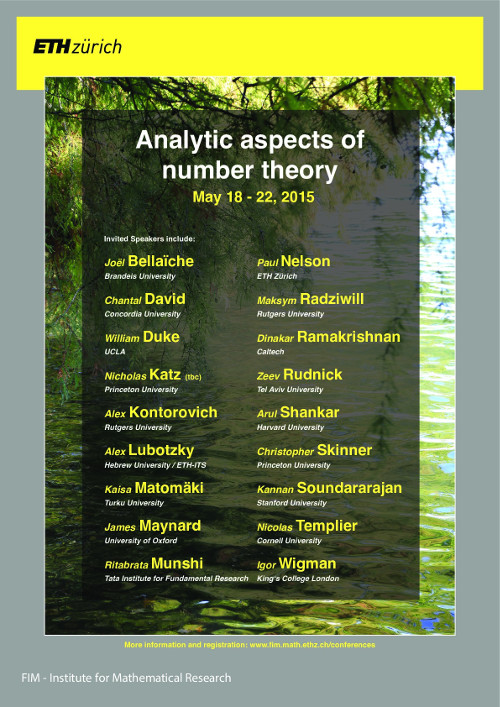This semester, I am teaching “Algebra II” for the first time. After “Algebra I” which covers standard “Groups, rings and fields”, this follow-up is largely Galois theory. In particular, I have to classify cyclic extensions.
In the simplest case where $latex L/K$ is a cyclic extension of degree $latex n\geq 1$ and $latex K$ contains all $latex n$-th roots of unity (and $latex n$ is coprime to the characteristic of $latex K$), this essentially means proving that if $latex L/K$ has cyclic Galois group of order $latex n$, then there is some $latex b\in L$ with $latex L=K(b)$ and $latex b^n=a$ belongs to $latex K^{\times}$.
Indeed, the converse is relatively simple (in the technical sense that I can do it on paper or on the blackboard without having to think about it in advance, by just following the general principles that I remember).
I had however the memory that the second step is trickier, and didn’t remember exactly how it was done. The texts I use (the notes of M. Reid, Lang’s “Algebra” and Chambert-Loir’s delightful “Algèbre corporelle”, or rather its English translation) all give “the formula” for the element $latex b$ but they do not really motivate it. This is certainly rather quick, but since I can’t remember it, and yet I would like to motivate as much as possible all steps in this construction, I looked at the question a bit more carefully.
As it turns out, a judicious expansion and lengthening of the argument makes it (to me) more memorable and understandable.
The first step (which is standard and motivated by the converse) is to recognize that it is enough to find some element $latex x$ in $latex L^{\times}$ such that $latex \sigma(x)=\xi x$, where $latex \sigma$ is a generator of the Galois group $latex G=\mathrm{Gal}(L/K)$ and $latex \xi $ is a primitive $latex n$-th root of unity in $latex L$. This is a statement about the $latex K$-linear action of $latex G$ on $latex L$, or in other words about the representation of $latex G$ on the $latex K$-vector space $latex L$. So, as usual, the first question is to see what we know about this representation.
And we know quite a bit! Indeed, the normal basis theorem states that $latex L$ is isomorphic to the left-regular representation of $latex G$ on the vector space $latex V$ of $latex K$-valued functions $latex \varphi\,:\, G\longrightarrow K$, which is given by
$latex (\sigma\cdot \varphi)(\tau)=\varphi(\sigma^{-1}\tau)$.
(It is more usual to use the group algebra $latex K[G]$, but both are isomorphic).
The desired equation implies (because $latex G$ is generated by $latex \sigma$) that $latex Kx$ is a sub-representation of $latex L$. In $latex V$, we have an explicit decomposition in direct sum
$latex V=\bigoplus_{\chi} K\chi,$
where $latex \chi$ runs over all characters $latex \chi\,:\, G\longrightarrow K$ (these really run over all characters of $latex G$ over an algebraic closure of $latex K$, because $latex K$ contains all $latex n$-th roots of unity and $latex G$ has exponent $latex n$). So $latex x$ (if it is to exist) must correspond to some character. The only thing to check now is whether we can find one with the right $latex \sigma$ eigenvalue.
So we just see what happens (or we remember that it works). For a character $latex \chi\in V$ such that $latex \chi(\sigma) = \omega$, and $latex x\in L^{\times}$ the element corresponding to $latex \chi$ under the $latex G$-isomorphism $latex L\simeq V$, we obtain $latex \sigma(x)=\omega^{-1}x$. But by easy character theory (recall that $latex G$ is cyclic of order $latex n$) we can find $latex \chi$ with $latex \chi(\sigma)=\xi^{-1}$, and we are done.
I noticed that Lang hides the formula in Hilbert’s Theorem 90: an element of norm $latex 1$ in a cyclic extension, with $latex \sigma$ a generator of the Galois group, is of the form $latex \sigma(x)/x$ for some non-zero $latex x$; this is applied to the $latex n$-th root of unity in $latex L$. The proof of Hilbert’s Theorem 90 uses something with the same flavor as the representation theory argument: Artin’s Lemma to the effect that the elements of $latex G$ are linearly independent as linear maps on $latex L$. I haven’t completely elucidated the parallel however.
(P.S. Chambert-Loir’s blog has some recent very interesting posts on elementary Galois theory, which are highly recommended.)












